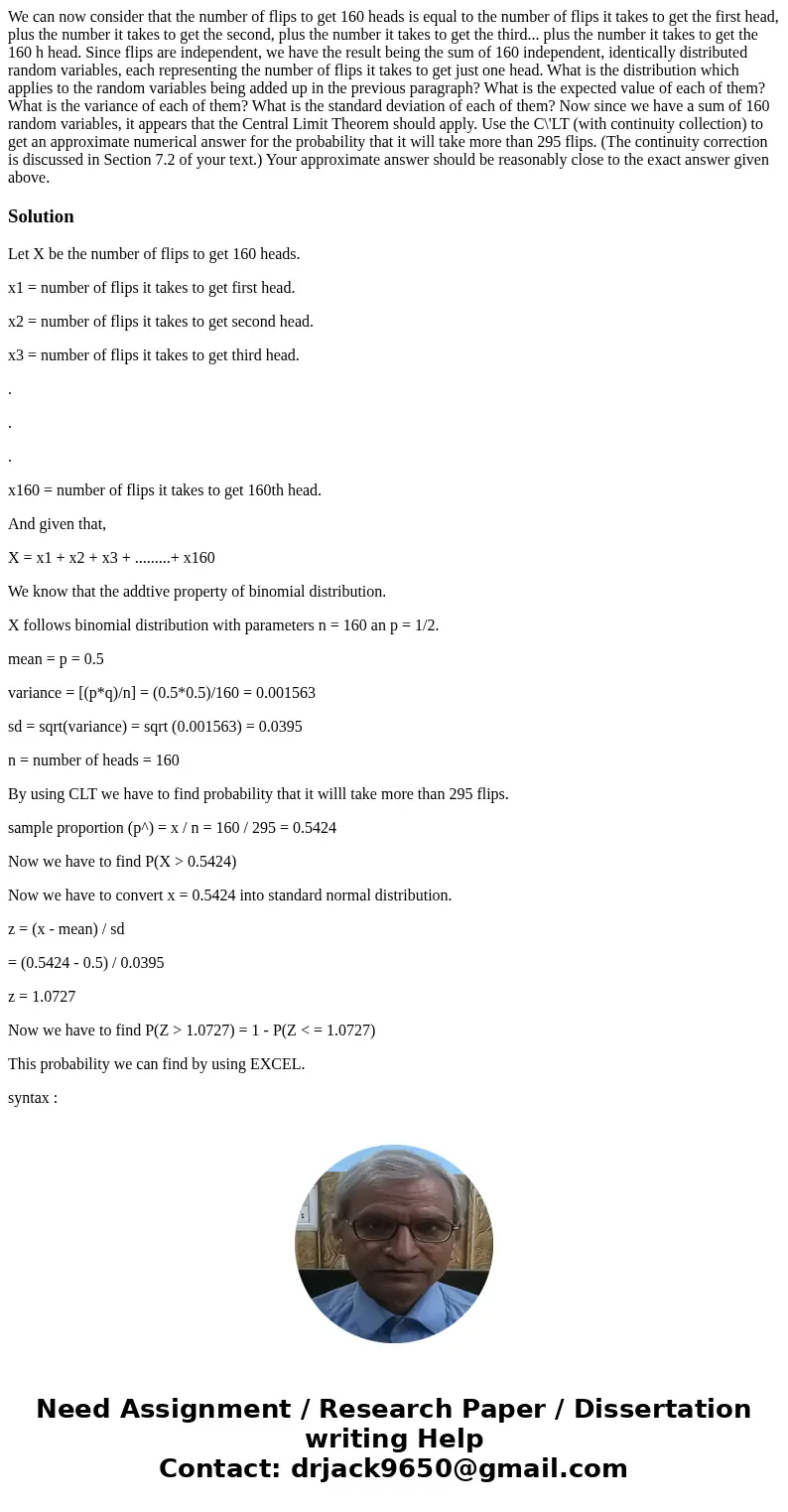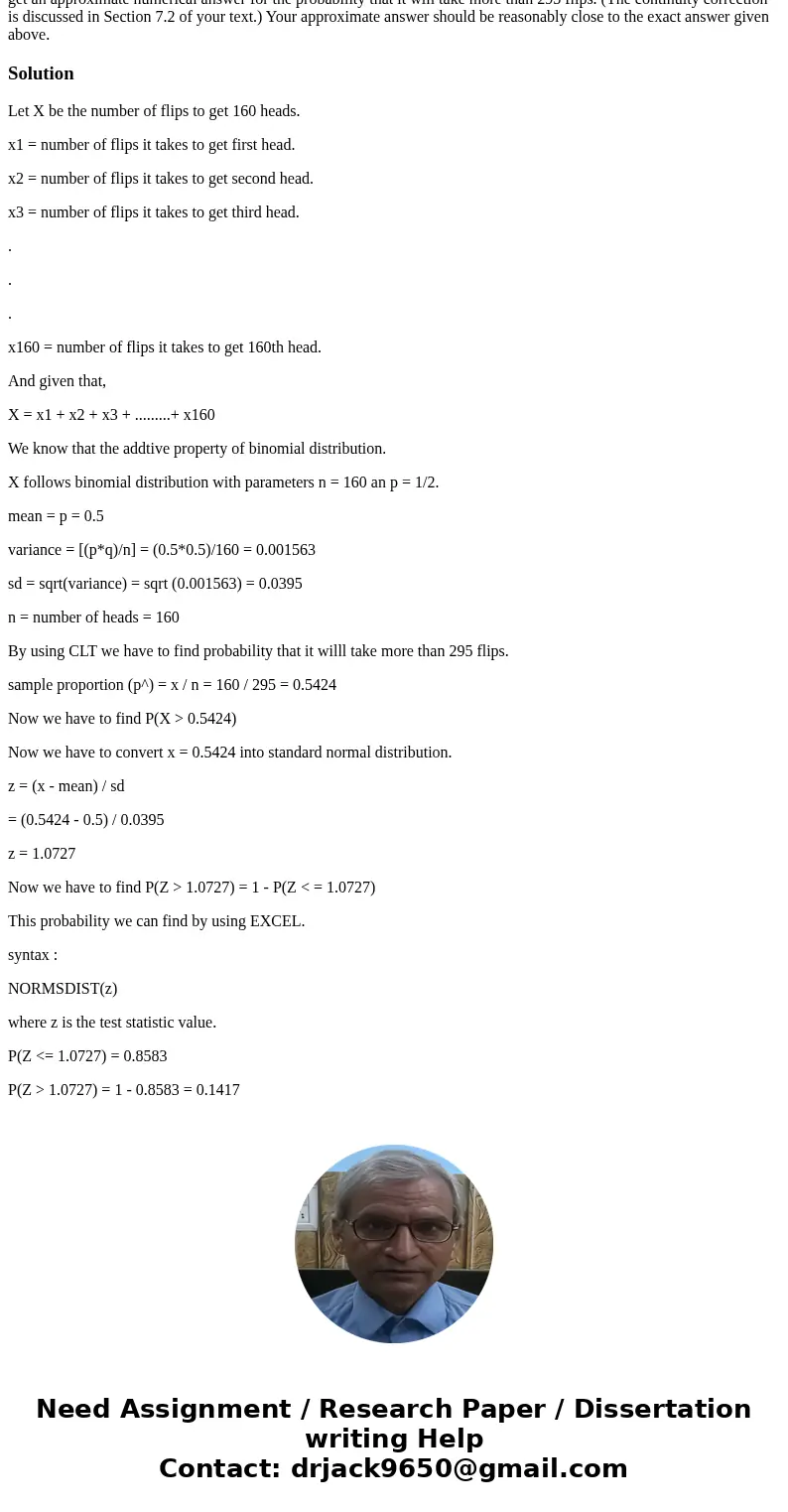We can now consider that the number of flips to get 160 head
Solution
Let X be the number of flips to get 160 heads.
x1 = number of flips it takes to get first head.
x2 = number of flips it takes to get second head.
x3 = number of flips it takes to get third head.
.
.
.
x160 = number of flips it takes to get 160th head.
And given that,
X = x1 + x2 + x3 + .........+ x160
We know that the addtive property of binomial distribution.
X follows binomial distribution with parameters n = 160 an p = 1/2.
mean = p = 0.5
variance = [(p*q)/n] = (0.5*0.5)/160 = 0.001563
sd = sqrt(variance) = sqrt (0.001563) = 0.0395
n = number of heads = 160
By using CLT we have to find probability that it willl take more than 295 flips.
sample proportion (p^) = x / n = 160 / 295 = 0.5424
Now we have to find P(X > 0.5424)
Now we have to convert x = 0.5424 into standard normal distribution.
z = (x - mean) / sd
= (0.5424 - 0.5) / 0.0395
z = 1.0727
Now we have to find P(Z > 1.0727) = 1 - P(Z < = 1.0727)
This probability we can find by using EXCEL.
syntax :
NORMSDIST(z)
where z is the test statistic value.
P(Z <= 1.0727) = 0.8583
P(Z > 1.0727) = 1 - 0.8583 = 0.1417


 Homework Sourse
Homework Sourse